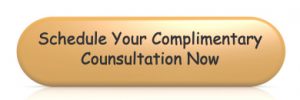Get a Grasp on Your Email Inbox
Getting a firm grasp on the pile of emails can be stressful, intimidating, and frustrating. Emails produce the lowest rate of productivity. That statement alone says it all: email will consume your time and energy if you do not learn how to take control of it. My research finds that, in one year, the average business will spend 20% of their day processing emails!
Here is the reality of emails: the volume of messages that are coming in will always exceed the number that you can process. The key to handling your emails is how you take control of your time and how you process the incoming messages. Here are several tips on how you can handle large volumes of messages flooding your inbox.
Eliminating Junk from Your Inbox
One way you can handle your emails is by asking yourself some simple questions. What kinds of emails are coming into my inbox? Who are you receiving emails from and why? Are you getting junk mail from coworkers or friends? Are there emails coming in that you didn’t sign up for, but they’re not going to your spam folder? Is it a project you’re working on? Does it have anything to do with what you do in your job? Are you receiving emails from newsletters or mailing lists that aren’t valuable or worth your time? Asking yourself these simple questions will help you determine the importance of each email and how you should or should not respond. Start unsubscribing from the emails you don’t want or need to be receiving.
If you receive 70 emails everyday on average, then just eliminating 7 emails daily will gain you 1.5 weeks per year! What could you be doing with another 1.5 weeks of free time?!
Handling Your Email Inbox
One way to reduce the time you spend in your inbox is to delegate 2 or 3 periods of time in the day to sort and respond to your emails. But when you make this time, you will need to have a time limit. Take control of this time by buying a timer or setting one on your computer that will alert you when it’s time to quit looking at your current message and move on to the next activity.
[wpob id=”2″]This means you do not respond right away every time you hear the “ding” signaling a new message! Most emails can wait for the designated time you’ve given yourself to look at your inbox. The only email that you should reply to quickly is when someone asks to set up a time with you to talk. Respond quickly and acknowledge that you have indeed received their email and will provide a full response shortly. But if the sender is requesting an answer now, respond, but make sure your email has action in it: keep that email short and straight to the point so you can get back on track with what you were doing.
Managing Your Messages
When reading an email, make a decision about it NOW. Respond, delete, move to a folder, or put it in your calendar to respond later (maybe you need a day to think about your answer before responding). There are 5 decisions you need to make with every email. They are:
-
- Delete (aggressively). If you don’t need it or it’s not worth your time, delete it.
- Delegate or Forward. Does that email apply to you? What if it’s for a coworker who is working on a project but the email got sent to you instead? What if it doesn’t apply to your job description? Forward it to the appropriate person.
- Do it in 2 minutes or less. Get straight to the point and do not be afraid to use bullets to make a point. If your email takes more than 2 minutes, then it may be time to pick up the phone and give that person a call.
- Drag to a folder. File it to a folder in your email (if you use Microsoft Outlook, you can do this quite easily). Or save the email to a folder you’ve created in your Documents. Some emails might help you at a later time, but for the time being, they are irrelevant.
- Defer it for later Action. Put it in your calendar, tasks, or flag it for later. These emails may include responses you need to think about before responding. It could also be emails concerning appointments or messages that do not need a response, but require action (or have a deadline) on your end.
It’s also best to stop participating in long-winded, back and forth emails. Pick up the phone or set a time to visit with that person to discuss whatever the matter may be so conversations will not be lost in the exchange of emails.
Ask yourself if an email will be more efficient using the phone, in person, or in a meeting. Determine which method of communication will be most beneficial to both you and the sender. If you feel that email works best with the sender, then make use of your bullet points to make your ideas known in a clear manner. You want everyone to be on the same page as you are.
It’s also a good idea to ask those who frequently email you to start using short, concise emails for your benefit and time as well as theirs. Ask the sender to be concise in his/her email and to use bullet points to convey their thoughts, questions or ideas.
To see a more detailed article about taking a hold on your email, please click here.
For more ideas on how to become more efficient in managing your emails, you can email Cathy at cathy@theproductivityexperts.com.



